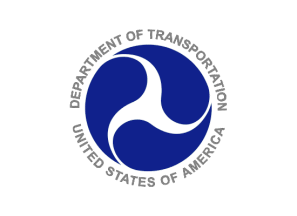Following the Norfolk Southern derailment in East Palestine, USDOT has taken steps to improve rail safety and called on Congress to pass the Railway Safety Act — working to protect communities of all sizes across the country.
Most recently, U.S. Department of Transportation’s Pipelines and Hazardous Materials Safety Administration (PHMSA) announced a Notice of Proposed Rulemaking that would require railroads to maintain — and update in real-time — accurate, electronic, information about rail hazmat shipments that would be accessible to first responders. Railroads would also be required to proactively notify first responders as soon as the railroad is aware of an incident involving hazardous materials.
In February, Secretary Buttigieg directed USDOT’s Federal Railroad Administration (FRA) to focus track inspections on High-Hazardous train routes. After starting the work in East Palestine, FRA announced this week that to date, it has helped execute nearly 4,000 inspections across the country.
Beyond safety regulation and inspections, USDOT is directly funding improvements in railway safety with funds from President Biden’s Infrastructure Law. This month alone FRA announced over $570 million in Railroad Crossing Elimination grants to eliminate or improve over 400 at-grade crossings around the country, making our roads and our railways safer.
As the USDOT continues to prioritize rail safety, the Department will have multiple representatives present at the NTSB’s field hearings in East Palestine this week including representatives from FRA and PHMSA. Both agencies have been assisting the independent NTSB investigation and providing technical expertise since the first hours of the derailment in East Palestine.
USDOT’s ongoing work to protect the American public and improve rail safety includes:
- Funding Hazmat Rail First Responders: PHMSA announced more than $25 million available in hazmat grant funding, including the Assistance for Local Emergency Response Training (ALERT) grant program. These grants help train first responders, improve safety, and reduce environmental impacts. In recent years thousands of responders nationwide have received training thanks to this program, including 2,500+ responders in 137 different locations in Ohio.
- FRA Safety Trainings: FRA gathered nearly 500 agency safety personnel from around the country in groups over a 3-week period to conduct bi-annual safety training. This training includes discipline-specific and cross discipline topics, such as new and emerging technology, rules, enforcement and investigation strategy, and tactics to ensure coordinated and consistent oversight and outreach across the rail industry.
- Rail Worker Confidential Safety Reporting Program: After Secretary Buttigieg pressed them, all Class I freight railroads agreed to participate in the Confidential Close Call Reporting System (C3RS) program for rail employees to help prevent safety issues.
- Bipartisan Legislation: The Senate proposal, endorsed by President Biden, includes provisions that Secretary Buttigieg called for in February as part of a three-part drive to increase rail safety, such as significantly increasing fines on industry for safety violations, strengthening rules for trains carrying hazardous materials, increasing funding for hazmat training, accelerating the timeline to phase in more robust tank cars, and ensuring a minimum of two crew members on trains.
- Safety Advisories and Bulletins:
- Safety Advisory for Hot Bearing Detectors: FRA urged railroads using hot bearing detectors (HBDs) to evaluate their inspection process, prioritize the proper training and qualification of personnel working with HBDs, and improve the safety culture of their organizations. The full advisory can be found here.
- Safety Advisory on Long Trains: FRA issued a Safety Advisory to increase awareness of the potential complexities associated with operating longer trains. The advisory also highlights several safety risks relating to blocked crossings, notably the impacts blocked rail crossings can have on first responders as they work to address emergencies and reach people in need.
- Safety Advisory on Train Makeup: FRA issued a Safety Advisory calling on freight railroads to prioritize proper train makeup, including weight distribution, and provided recommendations to improve train safety and reduce the risk of future accidents. The advisory makes clear that railroads need to take proactive measures to ensure the configuration of railcars and the loading of cargo is performed safely and railroad workers are supported and trained fully to ensure safety.
- Safety Advisory for Tank Car Covers: USDOT’s PHMSA acted on initial findings from the NTSB investigation into the Norfolk Southern derailment in East Palestine, and issued a Safety Advisory for tank car covers.
- Safety Advisory for Emergency Response Plans: PHMSA urged all railroad operators to create and maintain emergency response plans for the transport of hazardous materials, strengthen the accessibility of the AskRail system that provides real-time information on shipments to first responders, and inform PHMSA when they identify responders who are not able to access PHMSA’s grant-funded training. The full advisory can be found here.
- Safety Advisory on Tank Car Type: PHMSA released a Safety Advisory pressing rail tank car owners and Hazmat shippers of flammable liquids to remove their DOT-111 and CPC-1232 tank cars and replace them with DOT-117 tank cars. The incident in East Palestine, OH, demonstrated that DOT-111 and CPC-1232 tank cars do not perform at the highest level of survivability during derailments and fires, unlike the DOT-117 tank cars.
- Safety Bulletin on Hand-Operated Main Track Switches: FRA issued a Safety Bulletin to emphasize the importance of ensuring safe operations of hand-operated main track switches. FRA is investigating an April 16 train collision and derailment involving a misaligned switch that resulted in serious injuries to crew members.
- Safety Bulletin on Car Switching Hazards: FRA issued a Safety Bulletin to increase awareness of the hazards relating to switching cars. FRA is investigating a recent switching accident that resulted in a crewmember leg amputation.
- FRA Annual Enforcement Report: FRA issued the agency’s FY22 Enforcement Report summarizing the civil penalties against railroad companies for safety violations. The report includes a summary of rail safety and hazmat compliance inspections and audits as well as enforcement actions recommended by FRA.
- Holding Railroads Accountable: FRA is conducting a supplemental safety assessment of Norfolk Southern Railway and other Class I railroads and takes an expansive look at overall safety culture and operations.
- Meeting with Labor Leaders: USDOT leadership gathered leaders from unions representing tens of thousands of rail employees to hear safety concerns, both short- and long-term. Secretary Buttigieg has pushed major freight rail companies to guarantee paid sick leave for all rail workers.
- Emergency Breathing Apparatus NPRM: FRA issued a Supplemental Notice of Proposed Rulemaking that would require railroads to provide emergency escape breathing apparatus to train crews and other employees when transporting certain hazardous materials.
- Investments in Rail Safety: In the first year of the Bipartisan Infrastructure Law, FRA invested over $370M in safety improvements to physical infrastructure including nearly $190M for upgrades to tracks. In addition to Railroad Crossing Elimination grants announced recently, FRA will announce the next round of the Consolidated Rail Infrastructure and Safety Improvements (CRISI) Program Grants this summer.
Background:
Investigators from USDOT’s FRA and PHMSA were on the ground within hours of the Norfolk Southern Railway train derailment in East Palestine, Ohio, on February 3, 2023. The agencies are supporting the investigation being led by the National Transportation Safety Board, an independent agency. For more on the federal response and jurisdiction, including the U.S. Environmental Protection’s work to address air, water, and soil quality, see here.
To get the latest information on the investigation, please visit NTSB’s website.
###
Official news published at https://www.transportation.gov/briefing-room/roundup-usdot-efforts-keep-communities-safe-and-hold-rail-industry-accountable
The post Roundup of USDOT Efforts to Keep Communities Safe and Hold the Rail Industry Accountable first appeared on Reliable News.
Travel - Reliable News originally published at Travel - Reliable News

